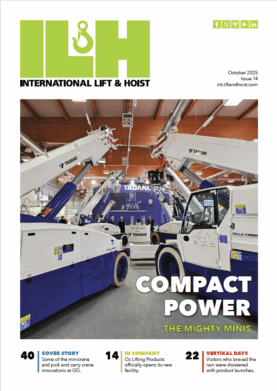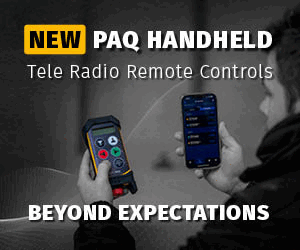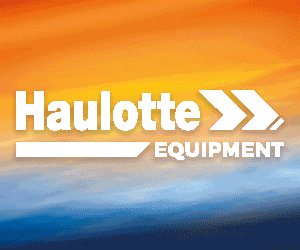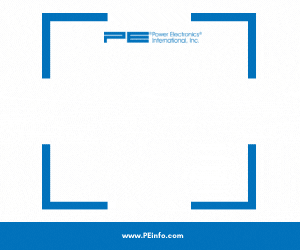)
Best of both worlds
Having a rigid in-person or remote working policy could see you missing the opportunities created by combining the two, as Joel Cox and Mike Sparks of Dellner Bubenzer explain.
We hear a lot about the return of face-to-face interaction in business, largely because only now people responsible for budgets and forecasts have had a clear run at mid- and long-term planning following the World Health Organization (WHO) finally declaring that Covid-19 no longer represents a “global health emergency”, in May last year.
We all knew that in-person would eventually return, as every global pandemic has eventually been contained. The only uncertainties were around the form that comeback would take. Would the new normal involve masks, discussions behind glass walls, or simply be based on a pretence that the Coronavirus never happened? With scrambled senses, it feels like the business world has lost its sense of direction.
Our multifaceted roles here require us to work in many vertical marketplaces, while life at a global operation in itself means we see our fair share of corporate strategy. All things considered, it means that we hear a lot about policy, as it pertains to face-to-face versus digital communication. In other words, are we getting back on airlines and carrying on where we left off in March 2020, or are we showing a bias towards the supposedly cheaper and more efficient world of using laptop cameras and remote conferencing?
The trouble with looking at it like that, is that organisations are forced to compare the two when it is not these approaches per se that are important. We prefer to look at it in terms of overall value and that usually means a combination of both is most sensible. In other words, we’re not loyal to one method or another, but we take the benefits of each. Why get on a plane if it is unnecessary? And why try to achieve something over video that would be far better suited to a visit and a site walk-around?
It Is also Important to consider the wider supply chain from the point of manufacture to use, and anywhere else in between that one might find themselves. That involves a level of conformity with business practices that might be beyond your control. Regardless, we herein try to make the case for common sense, as unpopular as that might appear to be sometimes.
Forged in steel
Our post-Covid strategy to working with our steel mill partners is a good blueprint that readers might be able to adopt.
In the past, when a mill called with an application, there would be an initial face-to-face meeting to review potential solutions; another one to climb on the equipment; and a final get-together to examine the proposal. The process took weeks and cost thousands of dollars. Now that all links within the supply chain are adept at using virtual tools, we are able to hold two of these three meetings virtually. Importantly, this has not impacted sales, but has positively impacted our expense budget, as well as freed up time for the team to chase leads and work on other endeavours.
This doesn’t mean that we’re looking to cut back even further the 33% of the time during steel mill discussions that remain in-person. This part of the process is vitally important. People still want to buy from people, and a (sanitised) handshake seals the deal. It is also the portion of the pitch that goes the furthest towards building a relationship and trust between the parties. We find that the more formal, transactional discussions are reserved for video, where people skills are not so much in demand.
It is no coincidence that the opening remarks and closing pleasantries on these calls, is often based on events that took place face-to-face, or at least they follow-up on discussions that we had when everyone was on the same shop floor or enjoying a networking dinner. Video calls can hereby be a forum for revisiting conversations about sports teams, children’s achievements, and upcoming vacations. When the in-person meetings are scrapped, this kind of chat is false and empty.
We’ve also found that we approach in-person meetings in the steel sector with much more vigour. It is not that we were once sleepy and ponderous when we rang the doorbell or reported in at reception, but it is true that we look forward to them more and have found that our customers value the experience more too. It can be frustrating to have to apply additional pressure to a busy schedule by spending a day on the road, and a lonely night in a hotel, when a more balanced approach is overall more sensible.
Our wider market strategies remain intact; we haven’t significantly changed anything. All we’ve done is look at what we learnt during the pandemic – every cloud has a silver lining, they say – and what we already knew to be the case after decades in business.
It doesn’t have to be a game of roulette where the choice is red or black; we can place our chips with greater care than that in a way that’s much more likely to deliver a return on investment of time and money.
House rules
The value of in-person activity shouldn’t be isolated to customer relationships.
Again, many organisations are too blinkered in their approach to remote working. The conversation shouldn’t be about facilitating employees to work at home a certain amount of time or insisting that they come into the office. Some roles might require more face-to-face time, and others not be negatively affected by long periods of time without a team catch up or being in the same boardroom. Companies should consider that this can be project-specific too; one week might look different to the next.
Training is another hotly contested subject and, once more, a flexible approach should be taken. If an experienced member of staff needs to take a refresher course, that’s likely to be most efficiently completed online at a time when it suits that individual. However, during the various stages of putting a new product to market, it will be valuable to get different departments together in the same place to make sure there is cohesion and a uniform level of understanding.
Think about what goes into launching such a product, whether it be a brake, load cell, crane, hoist, or control:
- Sales dept. pitches a need seen in the field to engineering along with volumes and target pricing;
- Engineering determines if they can build/design it;
- Production confirms it can be produced within a knowledge base and capabilities;
- Purchasing confirms that the materials can be acquired and for the needed pricing;
- Once all items are checked, either proceed as proposed or sales is asked for revisions to volume or pricing;
- Prototyping begins;
- Beta facilities/applications must be selected, and data needs to be collected;
- Marketing then works with sales to develop a feature-and-benefit strategy to help launch the product to the targeted markets;
- The sales team then must take these tools and supporting data to the target customers to start securing initial business for the product.
One mustn’t wrap all this up in an in-person or remote box. The two must be combined. Taking the whole process digital, for example, could result in missing important detail or not exposing a step or two to the appropriate level of scrutiny. Too many companies produce something and then try and force it to the market instead of solving an issue at the point of use. That’s what the whole process should focus on, certainly not how much money and time is being saved by video calls.
Online check-in
All businesses should dedicate some time – thusly, money – to getting teams together at regular intervals, even if it means overseas travel. It is unwise to use Covid and the fact that such activity was forced online as an excuse to cut a corner. True, a company might not have gone out of business as a result of digital sales meetings and product training, but they lost more than many are willing to accept.
A summit recently took place at our company in Siegburg, Germany, which was a case in point. We spent two days at a hotel reviewing strategies and products and made time for team building exercises. We then spent a third day visiting the production, and research and development, facilities to address more topics and understand how our orders are processed.
Information sharing of this type is more streamlined in-person as it is hard to hear everyone’s voice in a virtual setting. Many times, a real life meeting leads to deeper discussions, as the individual personalities assist in adding to the conversation. One of the main gains from these face-to-face meetings is developing relationships that support business development once we return to virtual. Remember what we learnt from our steel market experiences: it is easier to proceed in a virtual environment once you have a good understanding of how a person acts, thinks, jokes, etc.
Buoyed by these experiences, we’re holding further in-person meetings here in the US, incorporating a tour of our Spring, Texas facility. We staged a similar meeting last year at a location in Ohio and we are still reaping the rewards; this is evident every time we now reconvene remotely. Site visits, especially, are an effective way of deepening relationships between inside and outside teams.
It would be remiss of us not to bundle trade shows and conferences up in the same conversation. The events industry has come roaring back since Covid, meaning companies that no longer budget for participation are missing out. Remote conventions have a role to play but they’re not the same. We were well represented at TOC Europe two months ago, following the aforementioned Siegburg meetings, and it is why we’ll be exhibiting at a number of upcoming shows, including MINExpo (September), International WorkBoat Show, and Pacific Marine Expo (both November), in addition to a regional Association for Iron & Steel Technology (AIST) event in Merrillville, Indiana a couple of weeks prior to MINExpo.
In conclusion, there is clear evidence that anybody looking at the various ways of conducting business in the new world without analysing the particular merits and flaws with traditional and modern practices, is missing the point. Think of it in terms of the equilibrium of a busy life. When we’re on the road, days are consumed by visiting customers, and travelling in between visits. We can take care of some phone calls on the hop, while others understandably get neglected. We return to hotel rooms to catch up with family, sometimes missing our children’s bedtimes. As one trip concludes and another appears on the horizon, there might be time to prioritise family, catch up on emails, and make use of technology for some video calls, perhaps with some steel mill folks.
It truly is a delicate balance, and you’ve got to show your mettle.











